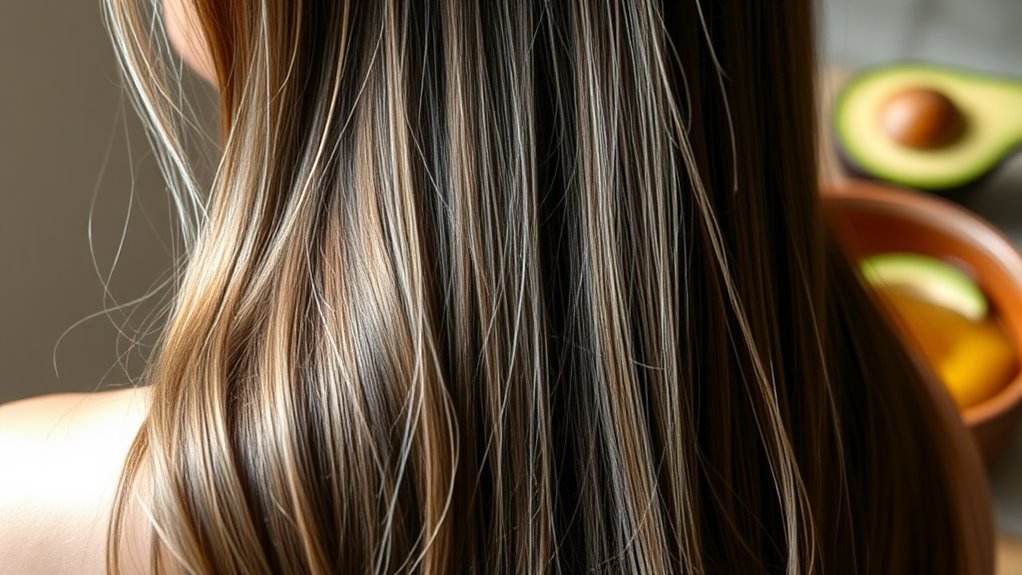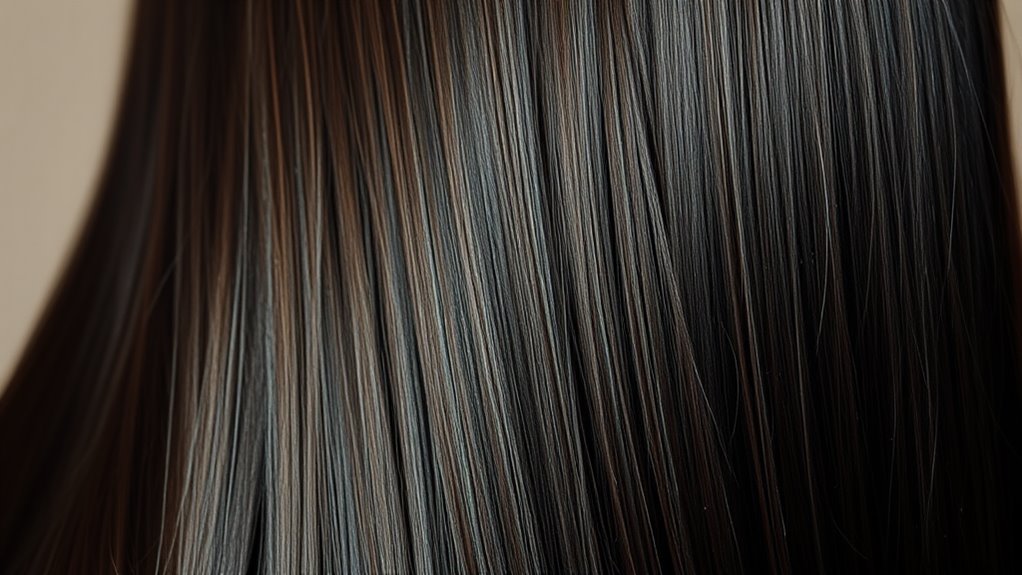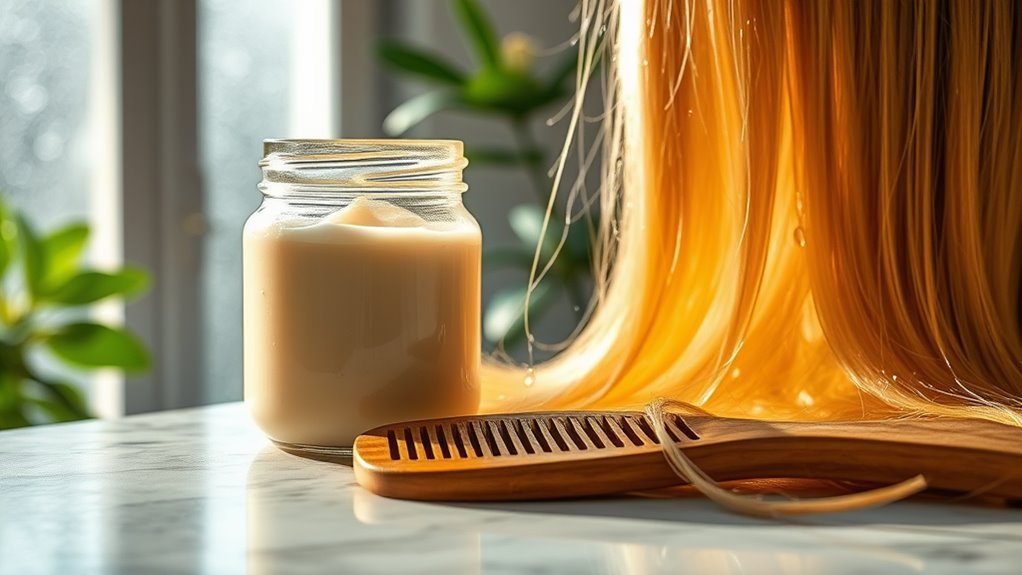This Homemade Mask Softens Hair Instantly!
While everyday ingredients like coconut oil may seem unassuming, research shows they can deliver instant hair softening through deep hydration. You’ll mix and apply this mask simply, potentially reducing frizz and strengthening strands. Stay tuned for tips on sustaining those silky results.
Key Takeaways
- This homemade mask, made with coconut oil, honey, and aloe vera, softens hair instantly by deeply moisturizing strands.
- Prepare by mixing equal parts of coconut oil and honey, warming gently for easy application.
- Apply evenly to damp hair from roots to ends, massaging the scalp for optimal absorption.
- Leave the mask on for 15-20 minutes to allow ingredients to penetrate and transform coarse hair to silky smooth.
- Rinse thoroughly with lukewarm water and follow with regular conditioning for prolonged softness.
Ingredients Needed
To create a homemade hair mask, you’ll need simple, evidence-based ingredients that can support hair health.
As a natural remedy for dry, rough hair, consider coconut oil, which studies indicate may enhance moisture retention by penetrating the hair shaft.
Honey, with its humectant qualities, could hydrate strands, while aloe vera might soothe the scalp, based on preliminary research.
Research supports that coconut oil can penetrate the hair shaft to effectively transform coarse strands into silky-smooth hair.
Always patch-test to avoid irritation.
Using these ingredients in your DIY mask can transform your hair from frizzy and rough to smooth, manageable locks.
How to Prepare the Mask
Having gathered the ingredients, you’ll mix coconut oil with honey in a clean bowl to form a base, ensuring thorough blending as this step promotes even application and may enhance the mask’s moisture-retaining effects, based on studies of natural emollients. For enhanced results, this mask can double as a leave-in treatment to provide prolonged hydration and protection. It’s crucial to proceed cautiously.
- Balance ratios per research to optimize emollient properties.
- Gently warm if solid, as evidence shows it aids mixing without altering compounds.
- Stir thoroughly, per studies, for even nutrient distribution.
- Verify ingredient purity to minimize risks, as advised by dermatological guidelines.
- Note potential allergies, with cautious testing recommended.
This simple preparation aligns with a DIY deep conditioning treatment that effectively addresses hair concerns using natural elements.
Application Steps
Apply the mask evenly to damp hair, starting at the roots and working toward the ends, as research indicates this technique enhances nutrient penetration while minimizing waste. This approach can also help in reducing dry scalp flakes for improved scalp comfort.
Then, gently massage it into your scalp using circular motions, which studies suggest boosts absorption.
Leave the mask on for 15-20 minutes, per evidence-based guidelines, before rinsing thoroughly with lukewarm water to prevent irritation.
For enhanced hair revitalization, incorporate a DIY essential oil blend to promote healthy growth.
Benefits of the Mask
The homemade hair mask delivers several evidence-based benefits for your hair and scalp.
You’ll experience potential improvements from its natural components, as supported by research.
- Studies suggest it enhances moisture retention, softening strands without greasiness.
- Evidence indicates reduced frizz, improving manageability in humid conditions.
- Research shows it may strengthen hair fibers, minimizing breakage risks.
- It potentially balances scalp pH, supporting a healthier environment.
- Trials imply increased shine, reflecting better cuticle integrity.
Moreover, by drawing on static electricity principles, this mask offers an additional layer of protection against unwanted hair issues.
In addition, this mask can help prevent static hair by providing a natural anti-static barrier.
Tips for Maintaining Soft Hair
How can you sustain soft hair long-term?
Evidence suggests regular use of hydrating conditioners helps maintain moisture, as studies show they reinforce the hair’s barrier.
You should limit heat styling tools, which research links to cuticle damage.
Incorporate a diet rich in omega-3s and proteins, potentially supporting elasticity. To combat static hair effectively, consider using natural remedies for overnight moisture retention.
Regular trims prevent split ends, and UV protection via hats preserves integrity.
To further prevent issues like static hair, consider incorporating simple solutions such as anti-static products into your routine.





